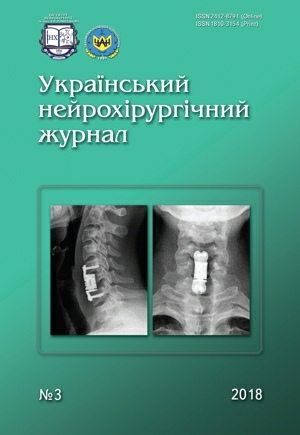To graft or not to graft? Median to radial nerve transfer in the forearm: an alternative approach to treat proximal radial nerve injuries
DOI:
https://doi.org/10.25305/unj.133273Keywords:
nerve transfer, neurotization, nerve grafting, proximal injury, radial nerve, median nerveAbstract
Background. Reconstruction of proximal radial nerve (RN) injuries via grafting technique brings good recovery of wrist extensors, wherein finger and thumb extensors recover to a lesser degree. The outcomes are strongly dependent on a gap length, timing of procedure, etc. An alternative approach — median (MN) to RN transfer — brings regenerating axons much closer to target muscles.
Objective. To compare the recovery of wrist and finger extensors provided by grafting versus distal neurotization technique at proximal RN injury.
Methods. Twenty-eight patients with proximal RN injuries underwent 21 reconstruction of RN continuity via grafting technique. Seven patients underwent transfer of MN branches of m. flexor carpi radialis (FCR) and m. palmaris longus (PL) to n. posterior interosseus (PIN) with simultaneous transfer of m. pronator teres (PT) to m. extensor carpi radialis brevis (ECRB).
Results. RN grafting brought recovery of the entire complex of thumb, fingers and wrist extensors only in 10 out of 21 cases (47.6 %). Radial wrist extensor(s) recovered in 100 % of cases, thumb extensors — in 85.7 %, finger extensors recovered in 61.9 % patients, with only 47.6 % showed recovery of thumb abductors. Eight patients required additional tendon transfers to restore fingers extension, 3 persons required thumb extension, 11 patients required thumb abduction. All 7 patients (100 %) after MN to PIN transfer received powerful and independent finger and thumb extension, as well as thumb abduction in much earlier terms. PT to ECRB transfer provided powerful and early wrist extension.
Conclusions. The outcomes of MN to RN transfer at proximal RN injuries are more predictable, cogent and time-saving compared to the outcomes received with grafting in terms of recovery of full-fledged function of fingers extensors and thumb abductors.
References
1. Lowe JB 3rd, Sen SK, Mackinnon SE. Current approach to radial nerve paralysis. Plast Reconstr Surg. 2002 Sep 15;110(4):1099-113. [CrossRef] [PubMed]
2. Elton SG, Rizzo M. Management of radial nerve injury associated with humeral shaft fractures: an evidence-based approach. J Reconstr Microsurg. 2008 Nov;24(8):569-73. [CrossRef] [PubMed]
3. Ray WZ, Mackinnon SE. Clinical outcomes following median to radial nerve transfers. J Hand Surg Am. 2011 Feb;36(2):201-8. [CrossRef] [PubMed] [PubMed Central]
4. Chapter 7. Clinical Nerve Repair and Reconstruction. In: Nerve Injury and Repair. New York: Elsevier; 2004. [CrossRef]
5. Ray WZ, Mackinnon SE. Management of nerve gaps: autografts, allografts, nerve transfers, and end-to-side neurorrhaphy. Exp Neurol. 2010 May;223(1):77-85. [CrossRef] [PubMed] [PubMed Central]
6. Al-Qattan MM. Tendon transfer to reconstruct wrist extension in children with obstetric brachial plexus palsy. J Hand Surg Br. 2003 Apr;28(2):153-7. [CrossRef] [PubMed]
7. Oberlin C, Durand S, Belheyar Z, Shafi M, David E, Asfazadourian H. Nerve transfers in brachial plexus palsies. Chir Main. 2009 Feb;28(1):1-9. [CrossRef] [PubMed]
8. Brown JM, Mackinnon SE. Nerve transfers in the forearm and hand. Hand Clin. 2008 Nov;24(4):319-40, v. [CrossRef] [PubMed]
Downloads
Published
How to Cite
Issue
Section
License
Copyright (c) 2018 Ihor B. Tretyak, Alexander A. Gatskiy, Ihor V. Kovalenko, Alexander N. Bazik

This work is licensed under a Creative Commons Attribution 4.0 International License.
Ukrainian Neurosurgical Journal abides by the CREATIVE COMMONS copyright rights and permissions for open access journals.
Authors, who are published in this Journal, agree to the following conditions:
1. The authors reserve the right to authorship of the work and pass the first publication right of this work to the Journal under the terms of Creative Commons Attribution License, which allows others to freely distribute the published research with the obligatory reference to the authors of the original work and the first publication of the work in this Journal.
2. The authors have the right to conclude separate supplement agreements that relate to non-exclusive work distribution in the form of which it has been published by the Journal (for example, to upload the work to the online storage of the Journal or publish it as part of a monograph), provided that the reference to the first publication of the work in this Journal is included.









